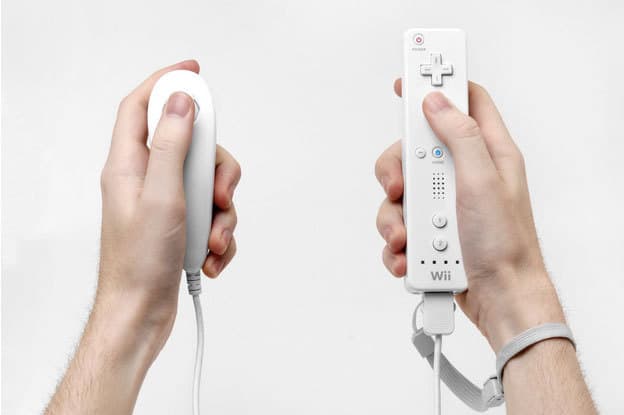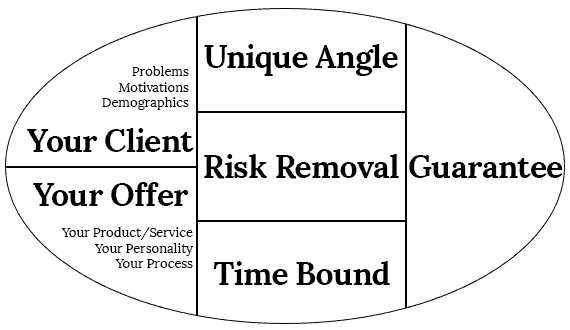One of the most powerful lessons I learned when dating was this: quality means nothing.
Seriously. Now, it wasn’t the women I was trying to date. That’s just the consensus. Quality isn’t a differentiator. It’s a standard. You’re only unique if you’re low quality, but that won’t get you anywhere.
So, I had to step back and think about things again. I know I’m a cool guy. I have the education thing going for me, I’m a bit of a workaholic, and I keep myself busy.
But when standing out against all the competition, it isn’t impressive to be educated, working, or to have hobbies like “going to the gym, watching movies, and hanging out with friends”.
I felt like a ship without a rudder, aimlessly moving about without any direction or idea where I would land.
Fortunately, it became apparent that I never gave anyone a real reason to take a chance with me.
There was no unique angle. There was no targeted message. There was nothing I offered. There was a lot of risk in wasting time on me.
So, I created my own USP and suddenly, more dates from more desirable, potential partners began…
—
Two Foundations of Building a USP
Before you do anything in business, you need to be clear on who your client is.
Not just the people who tend to pay you now, but your ideal clients.
I define ideal clients very simply as:
- they love working with you
- you love working with them
- it makes financial sense for them to work with you
- it makes financial sense for you to work with them
I find the most basic of guidelines to be the most effective.
You do want to get extremely detailed about who your ideal client is, however.
Dive deep into the following areas:
- Problems: what pains do they have? what would a solution look like to them?
- Motivations: what made them want to seek a solution? was there one moment that spurred action?
- Demographics: where are they from? is there a financial breakdown, like company size or household income, that indicates the ideal client? how old are they? what is their role in the family or organization?
These questions just get you started. Best would be to go in-depth about exactly who you serve and how they operate. That would include interviewing buyers and non-buyers to discover answers in more detail and in the client’s own words.
Once clear on who your ideal client is – what do you sell them?
There are only three potential things you can offer to your clients:
- Your Process
- Your Personality
- Your Service/Product
That’s it. We will get more clear on exactly what each means, but it comes down to one of these three aspects. And, each aspect can help you articulate how you are unique in its own way.
1. Your Unique Process
The way that you deliver value can be innovative and unique. It takes a bit of effort and creativity, but it can be a powerful way to differentiate yourself – and a cornerstone of your USP.
While it is even clearer how a service business can develop a unique process, a product-based company can as well. It all comes down to how you interact with your clients.
Experiential marketing is nothing new at this point. Yet, it still hasn’t been adopted by many companies. Making the process into an experiential marketing initiatives is one of the best ways to leverage the concept.
After all, your process should be evergreen, although open to ongoing improvements as well.
Your goal should be to create a process that people want to talk about. In a good way.
It’s easy to spot the businesses who have awful processes that get people talking. “You wouldn’t believe all the hoops they made me jump through just to buy from them…”
We want the opposite. “I have to tell you about what it was like working with this company…”
It’s definitely possible. Let me give you an example of a place that enamored me with their process.
Case Study: Death Ave Cafe, New York City

As a disclaimer, let me just say that I absolutely love coffee. I’m a total coffee nerd. I get quality (i.e., expensive) beans sourced from experts, grind them each morning, and then get to work. I end up miserable if I miss this part of my morning.
While spending a weekend in the frigid city in February 2015, I decided to stop in a small cafe along 10th Ave. Chinatown was too far of a walk to go caffeine-free.
When I walked into Death Ave Cafe, I was greeted by a warm, dark interior and prices closer to Starbucks than a Dunkin Donuts, but without the franchise-y feel. Perfect.
But that’s just the introduction. The process goes further.
You see, I knew I wanted a special kind of coffee, and seeing “Hellenic Coffee” on the menu caught my attention. It’s something I never heard of before, so I was hoping there was a unique process for it…
This classic Greek coffee is made with an interesting process.
First, you grind the beans – of course.
Next, you mix together the water and coffee grinds in a briki (a Greek coffee pot; also popular in Turkish culture and referred to as an ibrik or cezve).
Now, this is where it gets interesting. You place the briki on a bed of sand over a flame. This is a classic way of making Hellenic coffee. The sand evenly distributes the heat and brings the coffee to two boils over approximately two minutes of time.

When it comes to its first boil, you pour the foam into a cup, reboil, and add the rest of the foam. The remainder of the coffee brewed can be added to the foam initially poured in.

Now, if you’re not a coffee lover, you might not see the power of this process. Let’s summarize why it is a special process.
First, the target clients are people that love coffee. That’s why you visit a place like this and are willing to spend 300%+ more than if you went to a Dunkin Donuts or grabbing a McCafe.
Second, clients see the love and care that goes into each cup. It’s one thing to pull a lever, fill a cup, and pass it over to the buyer. And sure, that is efficient. But it leaves out the emotional impact that this process embodies.
Third, it is flat out unique. I have never seen this process done before, nor since. It may be popular in other cultures, but around America, we are more often pushed to being passed a coffee and moving on with our day.
Need proof of how this is considered a powerful and unique process?
I posted on Facebook to share it with all my friends. I referred people visiting the New York area to the cafe. And, of course, I just used the process as a case study here.
Final note: if you plan to visit New York City, stop by Death Ave (315 10th Avenue b/w 28th & 29th St.); DeathAve.com. Coffee-lover or not, indulge in the amazing process.
2. Your Unique Personality
Maybe innovating your process isn’t so easy. In industries like financial and health care, regulations may limit you.
If there are no legal and ethical implications limiting you yet you didn’t think of a way to innovate your process, please go back and reconsider. Look at the processes of businesses in other industries and compare them to your own. Don’t let “industry standard” stop you from standing out.
There is a powerful alternative to a unique process; a unique personality.
Your personality is completely under your own control.
What makes you you? How do people remember you? This is something you can develop to be unique for your business alone, especially if you’re at the forefront of the operation. Business owners that interface with clients fall into this category.
If you have strong leadership and team building skills, you can make this personality aspect spread across the entire organization. That takes more effort, but again, it can reap tremendous rewards as well.
A disproportionate influencing factor here is that competition cannot copy you. Maybe your product isn’t covered by patent or your process is replicable. But, personality is completely unique.
Case Study: The Contrarian Consultant, Alan Weiss

I discovered Alan Weiss as a clear authority in the consulting field. His book, Million Dollar Consulting, and his online library and newsletter has bits of wisdom unrivaled by the consulting community at large.
That deliverable differentiation was established along with his unique personality: Alan Weiss is a contrarian.
For his practice, this means he thinks and acts outside of the box. He isn’t delivering what companies typically expect from a consultant. He brings unique value by thinking contrary to popular belief and conventional wisdom. His clients benefit greatly from this.
But most importantly, Weiss embodies being “the contrarian consultant” in all he does and says. It’s his driving personality trait. And in a relationship-based business, it appears to work tremendously well for him.
But Weiss doesn’t just throw the nickname up on his website or as a tagline on his letterhead. He brings it into his interactions with clients and prospective clients.
When he speaks, he refers to himself as the contrarian and gives examples of how that’s true. When he writes, he does the same. He isn’t afraid of putting people off. How contrarian would he be if he was afraid? (If he was just trying to make everyone happy, he wouldn’t be successful anyhow.)
As a summary of this: How might you leverage your unique personality?
First, decide on what approach you want to take with your personality. Weiss is a contrarian. Others focus on other attributes. Think about what your personality is like already and what characteristics you can highlight and accentuate. It might be helpful to ask around with friends or family to get ideas.
Second, think about what your ideal clients most want your personality to be like. For Weiss, clients don’t want just another consultant. They want someone that challenges assumptions and delivers true, unique value. Your clients may want safety and stability. Figure this out before implementing your unique personality.
Third, start incorporating your unique personality into all you do. Writing an article? Make sure it has your voice. Meeting a client? Be sure to be authentically you with them. Greeting clients for the first time? Let them hear, see, and experience who they may end up working with.
Invest your time into this and you’ll become a memorable and unique authority yourself.
Final note: if you are a consultant yourself, I highly recommend picking up a copy of Million Dollar Consulting and giving it a read. It is an evergreen book. Learn more about Alan Weiss at AlanWeiss.com.
3. Your Unique Service/Product
Differentiating yourself based on your service or product takes a bit of ingenuity. Remember, “quality” means nothing. It’s a bare minimum standard to even be in the race. To lead the pack, you need something special about what you do.
To show how your offerings are different, you first need to be clear on what factors come into play when analyzing a product or service. Interviewing your clients would be most helpful to discover this.
An alternative, if you have the knowledge, is to simply map out the top 5-10 factors that influence a buying decision in your industry. When you have a set of factors, you can determine how your offerings compare to competing offerings.
Case Study: Nintendo Wii Rethinks Gaming

The video game console market has three clear leaders: Microsoft’s Xbox, Sony’s Playstation, and Nintendo’s consoles.
To stand out, Nintendo took a chance by drastically differentiating their offering by releasing the Nintendo Wii in 2006.
They knew they would have to make sacrifices by significantly differentiating their product. However, being just another console and trying to compete with Microsoft and Sony was a futile effort.
The Nintendo Wii did upset many hardcore gamers who prefer consoles that deliver the best graphics and most immersive online communities.
But Nintendo capitalized on other factors. One driving factor being those “Magic Wands” / “Wiimotes” the console was so well-known for. Not only did this bring motion sensor technology to the forefront of gaming, but it opened the console to a new audience. Novelty is a powerful, influential factor.
Instead of focusing on hardcore gamers that were used to the complexity behind standard gaming controllers, anyone could jump into a game and at least hold their own. From the six year old kid to the sixty year old grandpa. Complexity drastically dropped in comparison.
Other factors, like group and family fun, also differentiated Nintendo. All they did was scope out what factors influenced the gaming industry and drove their focus on a select few factors.
Here’s a summary of how you can differentiate your product or service:
First, figure out what factors influence purchases in your industry. Again ,client interviews are most helpful here. If you are savvy about conducting them, you’ll learn exactly what influences their decision. Interviewing non-buyers may be helpful as well.
Second, compare your findings to your own offerings. Do you currently have products or services that are different? If you meet but don’t diverge from industry standards, where is there opportunity to do just that?
Third, implement, incorporate, and embody this difference. Your advertising should speak to those two or three factors that make you stand out from the rest. Your people should be able to speak to why their company is unique (as a bonus, this gives a morale boost as well). Your clients should understand why your product or service uniquely meets their needs.
—
I was no longer just another guy out there. I was the entrepreneurial, ballroom dancing, MMA fighter who got on your nerves a bit but also made you laugh. I turned some people off instantly, and others, well…
—
Now that you have your two foundational elements of your unique selling proposition focused and clarified, it’s time to put them to use.
The Three Influential Elements
After all that, we don’t even have a USP yet. This is why it isn’t cheap or easy to get a powerful unique selling proposition. It’s exhausting. But, the return-on-investment is tremendous.
So, why don’t we start building the USP? It comes down to three main components of influence: a unique angle, risk removal, and a timeframe.
1. Unique Angle
How will you show your clients that you are a unique company that delivers tremendous value to them?
You have a tremendous amount of options for this. And since you already invested in learning who your ideal client is and what you are selling, you know how to frame this unique angle.
I’ll share a few ideas with you, but it’s up to you to be creative and focused on your unique situation.
- Your experience – have you found success with notable companies? do you have a few decades in the business?
- Your special sauce – is your technology patented? do you have a secret recipe that no one can replicate?
- Your outcome – does every client get the outcome that they want? are you able to provide an outcome no one else can?
- Your bundle – do you remove the hassle of working with a portfolio of companies by offering a bundle of services in one place?
- Your exclusivity – do your clients appreciate a certain status or novelty working with you?
- Your method – if your process is what you’re selling, this may make sense. Is how you deliver your offerings so special that you are known for it?
- Your ease – do you take pain out of the equation by providing a done-for-you product or service?
- Your customization – do you offer a level of personalized focus that competitors overlook?
- Your pricing – do you give your clients the opportunity to distribute payments over a certain time period, wait to pay later, or pay off the entire purchase up front at a deal?
You can see that we have a variety of options, and by no means are you limited to these above. However, placing this lens over your business and how you want to be perceived is key to standing out from the crowd.
As a result of investing your time and energy into this, your unique angle will deliver colossal ROI if leveraged with your prospective and current clients.
2. Risk Removal
Risk is the reason people don’t buy. Risk is the reason people don’t start their own businesses. Risk is the reason why people fail at starting their own business.
Removing risk is how you make people make decisions. And, they’re smart decisions, at that.
You will have to assume some risk for your clients. Expect that to be part of this process. However, I can promise you that if you remove risks that clients really care about, it will be worthwhile.
For example, risk removal might mean offering for the client to not pay you for a full-month, the timeframe they would need to decide if your offerings are right for them. However, the additional clients that will buy from you will overwhelmingly outweigh the few clients that decide you aren’t right for them.
There are as many ways to remove risk as you can conjure up. Here’s a few to get you started:
- This product doesn’t have or include ______
- Your outcome doesn’t result in ______
- This doesn’t cost or consume ______
- You don’t need or require ______
- You won’t waste ______
All you have to do is identify the main worries clients face before making the decision to buy and remove them.
The organic foods industry does this by saying a product doesn’t have GMOs. Lawyers use this when they operate by only being paid for successful cases, meaning your outcome doesn’t result in a lost case and thousands in legal fees.
The opportunities are endless. You merely need to discover what those opportunities are and be open to exploring them with your prospective clients.
3. Time Bound
Nothing you claim is as powerful as it can be when tied to a certain timeframe. That’s what we do after clarifying our unique angle and removing risk.
This is similar to removing risk. It’s a way to build confidence in our clients. Put simply, no one wants to wait around forever to get the result or outcome they want. We are impatient creatures, especially in American culture.
Rather than be cynical about that, we should embrace it and remind people why we are the smart choice because of that.
Again, I have a basic structure to help create this element. You can fill in the blanks, literally, as follows:
- X negative thing won’t happen before ______
- X negative thing won’t happen after ______
- Y positive outcome will happen before ______
- Y positive outcome will happen after ______
What does your product or service help clients avoid before or after a certain time? What does it help them gain?
Telling someone you can help them save $1,000 interests them. Telling them they can save $1,000 in the next hour gets them talking with you.
Starting your own $10,000 per month business is slightly intriguing. Starting it and reaching $10,000 per month in 45 days is fascinating and drives me to learn more.
Give your clients that same desire to learn more by making your unique selling proposition timebound. It helps clarify expectations as well, creating a more positive relationship from the beginning.
– – –
Guarantee
This is the last piece of the puzzle. By now, we’re selling a specific offering to a certain ideal client. We are speaking to a unique angle, removed risk, and set a timeframe.
Still, prospective clients may be apprehensive about working with you. Big claims and little risk can be super attractive, but potentially dubious. Let’s wipe those worries away.
Guarantees are where so many companies fail. We often see half-hearted guarantees that provide no reassurance or value to the clients.
There are three main ways to offer a guarantee:
- Refund
- Replace
- Redo
Those are your options. What makes sense to your business and for your clients?
As long as you stay within reason, audacious guarantees are powerful. I recall seeing a double-money-back guarantee on a $4,000 product. That means if you weren’t happy, you get a full refund plus an additional $4,000 for “wasting your time”. Brave and bold, although I’m unsure if it’s what I’d suggest.
More reasonable and realistic would be a full-refund. This is what you should provide at minimum. Also, consider the timeframe on that, if there is one. Don’t be too limiting in when that refund can take place. Nordstrom, for example, offers refunds on their products for an entire year. That has established loyalty with their client base.
Another great example is an online education program that offers access to an eight week course. If you decide you aren’t interested in it anymore, you get your money back but also get to keep the bonuses. That leaves the client at no loss and still some benefit.
Can you provide a full refund for your products and services? If not, would your clients appreciate you replacing the products? Or would redoing the service be more beneficial?
Remember now more than ever, this isn’t about you and your business. Rather, it’s about your clients and what they want.
Creating Your USP By Bringing It All Together

There are six components we covered here. You should have a bullet-point style outline of each area:
- Your Client
- Your Offer
- Unique Angle
- Risk Removal
- Time Bound
- Guarantee
Now combine it together into one, fluid statement. The short, the better.
At first, it may be easier to explain each in an entire, individual paragraph. From that, you want to cut it down as much as possible, without removing the value of each are you mention, but while removing every non-value-added word.
In this process, you will likely be able to discover a few USPs at different lengths. There may be a ten word version and a twenty-five work version that both make sense. You then would have two options based on need. For example, twenty-five words may be too much for an advertisement, but may fit on your website “about” page perfectly.
As a final note, I’m a huge fan of testing. That means when you find a unique selling proposition, compare it to an alternative. If you use direct mail or online marketing, you can easily swap out one USP for the other. Test which delivers more ideal clients and adjust from there. At that, you can continue to test new versions if you want to approach that “perfect” USP.
So, share your thoughts in the comments below. What’s your USP? How did it change from before? Do you have your own USP formula?


This made me laugh in a good way, I may add! I had been a little peveed that a certain opportunity wasn’t available in our area for ages, and then it happened to me. A Homer Moment take your pick, either doh’ or Ruth what a doughnut!’. Problem solved by just making it happen myself. Funny how we often miss the obvious, or, as you say Lucy, the thing right in front of our own noses.